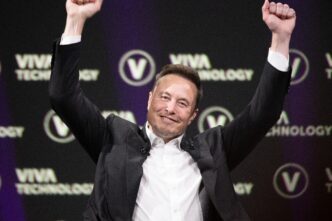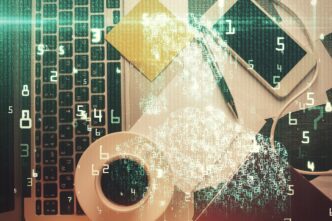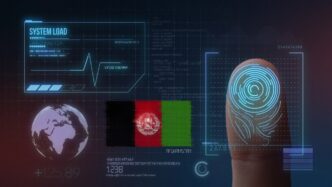Executive Summary
The Story So Far
Why This Matters
Who Thinks What?
Elon Musk, the visionary entrepreneur behind Tesla, SpaceX, and X (formerly Twitter), famously navigated the brink of financial collapse in 2008 to emerge as one of the most influential business titans of the 21st century. His journey from near-bankruptcy involved simultaneously saving two fledgling companies—an electric car manufacturer and a rocket company—amidst a global financial crisis, showcasing an unparalleled blend of audacious ambition, relentless perseverance, and critical last-minute decisions that ultimately reshaped industries and cemented his legacy. This period of intense struggle and eventual triumph illustrates how Musk defied overwhelming odds, turning seemingly impossible ventures into multi-billion-dollar enterprises.
The Genesis of Ambition
Early Ventures and Capital Accumulation
Elon Musk’s entrepreneurial spirit was evident long before his ventures into electric vehicles and space exploration. His first major success came with Zip2, a web software company providing online city guides to newspapers, which he co-founded in 1995. Compaq acquired Zip2 in 1999 for $307 million, netting Musk $22 million from the sale.
This capital formed the foundation for his next groundbreaking endeavor: X.com, an online financial services and email payment company. X.com later merged with Confinity to become PayPal, which eBay acquired for $1.5 billion in 2002. Musk, then the largest shareholder, walked away with approximately $180 million after taxes, a fortune he would largely reinvest into his next, far more ambitious, projects.
The Brink of Collapse: 2008
Simultaneous Crises at Tesla and SpaceX
The year 2008 stands as the most perilous period in Elon Musk’s career, a time when both Tesla and SpaceX faced existential threats concurrently. Tesla, founded in 2003, was struggling with the production of its first vehicle, the Roadster. Despite its innovative design and performance, the car was plagued by manufacturing delays, cost overruns, and quality control issues, consuming capital at an alarming rate. The company was constantly on the verge of running out of cash, needing successive funding rounds to stay afloat.
SpaceX, founded in 2002 with the goal of revolutionizing space travel, was also in dire straits. Its Falcon 1 rocket, designed to be a low-cost launch vehicle, had failed in its first three launch attempts between 2006 and 2008. Each failure was a catastrophic loss of rocket and payload, eroding investor confidence and depleting Musk’s personal funds, which were the primary source of financing for both companies. The entire aerospace industry watched with skepticism, doubting whether a private entity could ever successfully reach orbit.
Personal Sacrifice and Critical Lifelines
As the global financial crisis intensified in late 2008, investment capital dried up, pushing both Tesla and SpaceX to the absolute precipice. Musk had poured nearly all of his remaining PayPal fortune, estimated at over $100 million, into these two ventures. He faced immense personal pressure, reportedly borrowing money from friends just to cover living expenses. The situation was so desperate that he described having to choose which company to save, or if he could save either.
In a dramatic turn of events, on Christmas Eve 2008, two critical lifelines emerged. SpaceX secured a $1.6 billion contract from NASA for 12 Falcon 9 launches and Dragon spacecraft missions to resupply the International Space Station. This monumental contract, awarded after the Falcon 1 finally achieved a successful orbit on its fourth attempt in September 2008, provided the validation and financial stability SpaceX desperately needed. Simultaneously, Tesla managed to close a crucial $40 million funding round, with Musk personally investing the last $20 million of his liquid assets. These eleventh-hour injections of capital and confidence saved both companies, allowing them to continue their groundbreaking work.
Defying the Odds: A Multi-Front Battle
Technological Breakthroughs and Relentless Iteration
Musk’s defiance of the odds was not merely financial; it was deeply rooted in technological innovation and an unwavering commitment to his long-term vision. At SpaceX, he pushed engineers to iterate rapidly on rocket designs, learning from each failure. The successful Falcon 1 launch proved that a private company could indeed reach orbit, paving the way for the more powerful Falcon 9 and the reusable rocket technology that would revolutionize the industry.
For Tesla, the challenge was to prove that electric vehicles could be desirable, high-performance alternatives to gasoline cars, not just niche eco-friendly options. The Roadster, despite its early production woes, demonstrated the potential. The subsequent development of the Model S, Model X, and later the mass-market Model 3, showcased Tesla’s ability to innovate in battery technology, electric powertrains, and autonomous driving software, constantly pushing the boundaries of automotive engineering.
Overcoming Skepticism and Manufacturing Hurdles
Musk faced widespread skepticism from established industries and financial markets. Auto executives dismissed Tesla as a fringe player, and aerospace giants doubted SpaceX’s capabilities. Yet, Musk consistently defied these expectations. He embraced vertical integration, building much of the technology and manufacturing processes in-house, from battery packs to rocket engines, which allowed for unprecedented control and speed of development.
However, this approach also presented significant manufacturing hurdles, famously dubbed “production hell” for the Model 3. Musk personally immersed himself in factory operations, often sleeping on the factory floor to oversee production lines and troubleshoot issues. His hands-on leadership and relentless drive to scale production, despite immense challenges, were instrumental in turning Tesla into a mass-market car company.
The Rise of a Business Empire
Tesla’s Ascent to Automotive Dominance
After surviving 2008, Tesla went public in 2010, becoming the first American automaker to do so since Ford in 1956. The introduction of the Model S in 2012 was a watershed moment, earning critical acclaim and proving the viability of premium electric vehicles. The company’s subsequent growth, fueled by continuous innovation in battery technology, charging infrastructure (Supercharger network), and software, propelled it to become the world’s most valuable automaker by market capitalization.
SpaceX’s Revolution in Space Exploration
SpaceX’s trajectory mirrored Tesla’s, achieving significant milestones that redefined space exploration. Following the NASA contract, SpaceX successfully launched the Falcon 9, developed the Dragon spacecraft, and achieved the historic feat of landing and reusing orbital-class rocket boosters. This reusability dramatically reduced launch costs, opening up access to space for a wider range of customers and paving the way for ambitious projects like Starlink, a global satellite internet constellation, and Starship, a fully reusable super-heavy launch system designed for Mars missions.
Expanding Horizons: Neuralink, The Boring Company, and X
Beyond Tesla and SpaceX, Musk continued to expand his empire with new ventures. Neuralink aims to develop high-bandwidth brain-machine interfaces, while The Boring Company seeks to alleviate urban congestion through underground tunnel systems. Most recently, his acquisition and rebranding of Twitter into X reflect his ambition to create an “everything app.” These diverse endeavors underscore his commitment to solving what he perceives as humanity’s most pressing problems, from sustainable energy and interplanetary travel to cognitive enhancement and communication.
Lessons in Resilience and Vision
Elon Musk’s journey from the precipice of financial ruin to leading multiple industry-defining companies offers invaluable lessons in entrepreneurial resilience. His story highlights the critical importance of a clear, long-term vision, an unwavering belief in one’s mission, and the capacity for immense personal sacrifice. It demonstrates that even when facing overwhelming odds and widespread skepticism, a combination of audacious goals, relentless execution, and timely strategic decisions can transform seemingly impossible dreams into world-changing realities.








